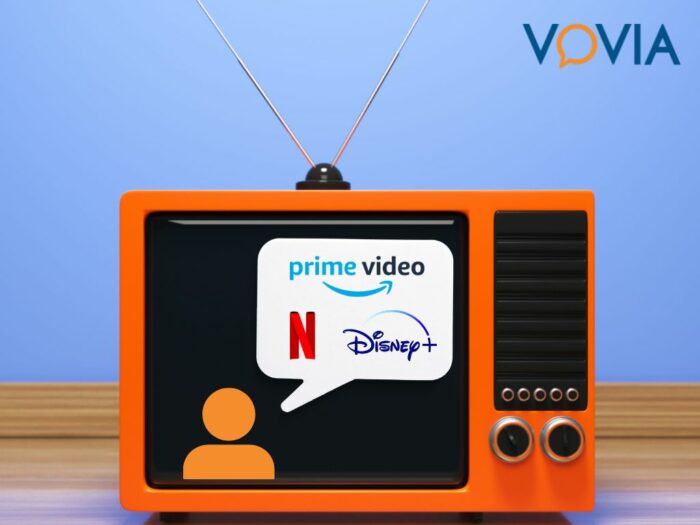What You Need to Know About Advertising on Netflix and Other Streaming Platforms in Canada
Raise your hand if you’re a subscriber of a streaming service! There are a lot of us with subscriptions to streaming services like Netflix, Prime, and Disney+ and understandably so, as there are a lot of options for consumers right now and lots of content to consume. But things are shaking up in the streaming world. In this blog we’re going to cover the entry of ad-supported streaming into the Canadian market.

Netflix Shakes Things Up
In 2008, Netflix shook up the television industry by offering a service allowing viewers to watch shows and movies commercial free and whenever they wanted. Almost a decade and a half later, only half of that still holds true. This past November Netflix launched an ad-supported subscription tier, no longer making Netflix completely commercial free. Officially called ‘Netflix Basic with Ads,’ the tier is now available in Canada for a monthly price of $5.99 compared to the standard $16.49. In addition to ads, the lowest tier also comes with some other limitations including lower video quality, inability to download and limited to one device streaming at a time.
Why is Netflix doing this you may ask? For the first time in a decade, Netflix saw a decrease in subscribers. With the increasing number of streaming services and overall inflation pressures consumers are facing, a lower cost tier may help viewers save a bit of money without having to cut services completely. In December 2022, Disney followed Netflix down the path of offering an ad-supported subscription tier for its Disney+ service.
Deloitte predicts that “every major subscriber-based streamer in developed markets will have an ad-funded tier to complement ad-free options and slow the number of cost-conscious customers cancelling their subscriptions.” Netflix and Disney+ are among the first to offer this, but they likely won’t be the last.
What does this mean for consumers?
In 2021, 70% of North Americans said they paid for two or more paid video streaming services (Statista 2022). With monthly subscriptions ranging from $5 – $20+ / month, consumers are realizing the cost of having multiple subscriptions may no longer be in their budget. However, a lower-cost ad-supported tier may help alleviate some of the pressure and give consumers a more affordable option without having to cancel their subscriptions entirely.
In a DISQO survey among American’s 18+, by far the top reason consumers would consider a lower-cost ad-supported tier of streaming services is to have the flexibility to save money.
Of course, ads are not present in all subscription tiers and consumers have the choice to not switch to a lower-cost subscription. The top reasons adults would not be interested are that they do not want their show to be interrupted by commercials and they find commercials annoying.
At least for now, the ad-free subscription will give consumers the choice to opt for a cheaper subscription option that will contain ads. In the future, I wouldn’t be surprised to see the ad-free version charge an even higher premium, which will no doubt make the choice between ads and cost a more difficult one.
What does this mean for Advertisers?
Historically, subscription-based video-on-demand (SVOD) platforms like Netflix, Disney+, Crave, etc. have been off limits for advertisers. While we know many people are opting to watch TV through streaming services instead of broadcast TV, especially the younger demographic, inventory has been limited on ad supported video streaming (AVOD). Of the AVOD services in Canada, Youtube has strong reach at roughly 79%. Beyond that, AVOD platforms like CTV, CBC Gem, etc. see much lower reach with the top platform only reaching about a quarter of Canadians.
The addition of ads on Netflix, Disney+ and likely other VOD streaming platforms should open up a lot more inventory for advertisers in Canada in the future. Currently, it appears that Netflix has limited sales to multinational brands so we still do not have access to inventory. However, Netflix has reported ads will be sold through Microsoft’s ad platform Xandr so we imagine it will only be a matter of time before ads can be purchased on the open exchange. Similar to online display, additional inventory will give us more opportunities to layer on targeting so we can make sure we’re reaching the right audience.
As mentioned previously, we know streaming is especially popular among the younger demo, with half of both Gen Z and millennial viewers only watching streamed TV. The good news is, a recent report in the United States shows that these demos are also the most likely to switch to an ad-supported tier. Assuming this trend is similar in Canada, this will be an excellent opportunity to reach Gen Z and Millennials.
Want to learn more about how connected TV might work for your brand? Let’s chat!
